Sydney, New South Wales Australia | change
Shabbat, March 22, 2025
The church and the government of Rome set Wednesday, March 6, 1430, as the day when all the Jews of Rome must convert or face death. On that day a great earthquake shook Rome and many of the archbishops and priests who conceived the decree were killed. Following the earthquake, Pope Martin V annulled the decree.
The Torah reading of Parah (Numbers 19) is added to the weekly reading. Parah details the laws of the "Red Heifer" and the process by which a person rendered ritually impure by contact with a dead body was purified.
(When the Holy Temple stood in Jerusalem, every Jew had to be in a state of ritual purity in time for the bringing of the Passover offering in the Temple. Today, though we're unable to fulfill the Temple-related rituals in practice, we fulfill them spiritually by studying their laws in the Torah. Thus, we study and read the section of Parah in preparation for the upcoming festival of Passover.)
Links: The Parah reading with commentary
The Calf's Mother
Waves of life flow from the heavens above, carrying with them all your needs.
Celebrate whatever comes to you, out loud and with joy, and your voice echoes back with waves of even greater force.
The channels of life are widened and their currents grow strong.
